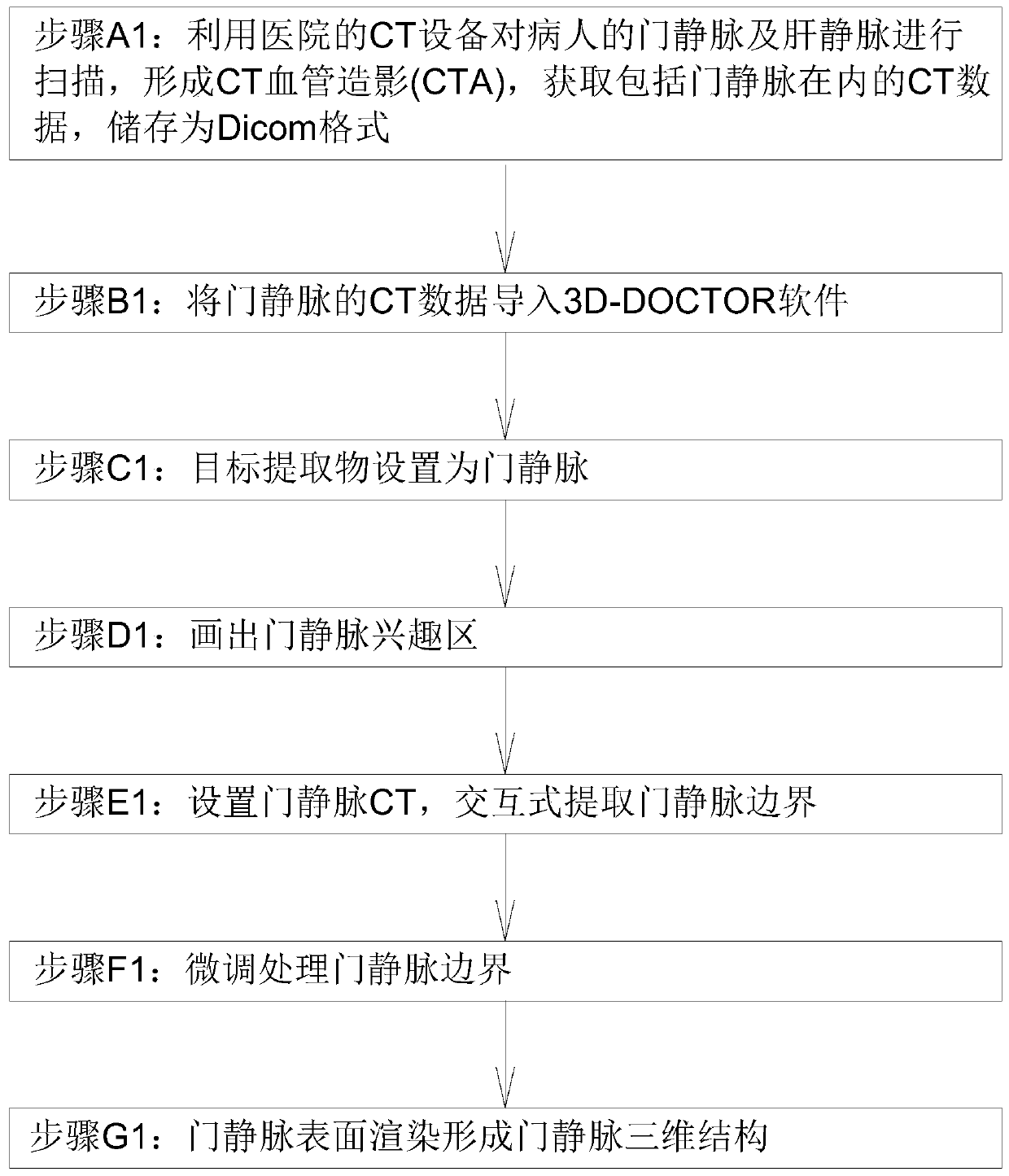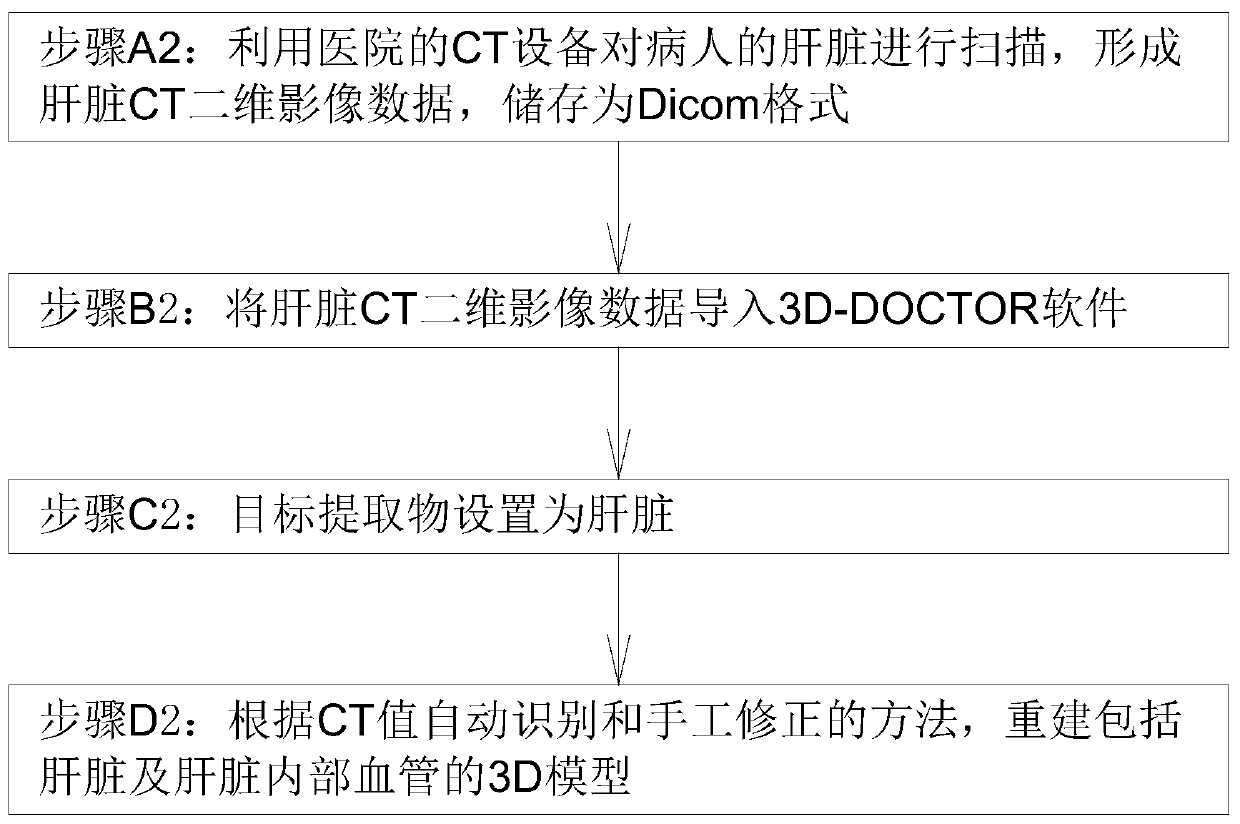Organ three-dimensional image reconstruction method, operation navigation method and operation auxiliary system
A three-dimensional image and auxiliary system technology, applied in the field of surgical assistance systems, can solve the problems that the surgical assistance system cannot present stereoscopic three-dimensional images, cannot present stereoscopic three-dimensional images and surgical navigation, and the reconstructed images are inaccurate. The effect of minor surgical wounds, improving surgical precision, and improving medical services
- Summary
- Abstract
- Description
- Claims
- Application Information
AI Technical Summary
Problems solved by technology
Method used
Image
Examples
Embodiment 1
[0044] Such as figure 1 As shown, what this embodiment provides is a method for reconstructing a three-dimensional image of an organ, including the following steps:
[0045] Step 1. For the target reconstructed organ, use existing medical equipment to process the target reconstructed organ, and obtain CT or MRI two-dimensional image data;
[0046] Step 2. Import the two-dimensional image data in step 1 into 3D-DOCTOR software, and use the 3D-DOCTOR software to reconstruct the three-dimensional model of the target reconstructed organ and form a three-dimensional image data file.
[0047]In step 2 of the above steps, after importing the 2D image data in step 1 into the 3D-DOCTOR software, set the name of the target reconstructed organ, draw the area of interest of the target reconstructed organ, set the data format of the 2D image data, and interactively The boundary of the target reconstructed organ is extracted according to the formula, and then the surface is rendered to f...
Embodiment 2
[0057] Such as image 3 , Figure 4 As shown, this embodiment provides a method for reconstructing a three-dimensional image of viscera. The method for reconstructing a three-dimensional image of viscera is similar to the method for reconstructing a three-dimensional image of blood vessels. The liver is used as an example to perform three-dimensional reconstruction of the liver, which specifically includes the following steps:
[0058] Step A2: Use the CT equipment of the hospital to scan the patient's liver to form liver CT two-dimensional image data and store it in Dicom format. The two-dimensional image data is stored in Dicom format with a slice thickness of 2.5mm and an image resolution of 512×512 pixels;
[0059] Step B2: Import liver CT two-dimensional image data into 3D-DOCTOR software, and the software automatically sets the actual scale of the picture;
[0060] Step C2: the target extract is set to liver;
[0061] Step D2: Reconstruct the 3D model including the liv...
Embodiment 3
[0064] Such as Figure 5 to Figure 8 As shown, what this embodiment provides is a method for reconstructing a three-dimensional image of a bone. The method for reconstructing a three-dimensional image of a bone is similar to the method for reconstructing a three-dimensional image of a blood vessel. The following takes the knee joint as an example to perform three-dimensional reconstruction of the knee joint, which specifically includes the following steps:
[0065] Step A3: Use the hospital's nuclear magnetic resonance (MRI) equipment to scan the patient's knee joint to form two-dimensional image data of knee joint MRI. The two-dimensional image data is stored in Dicom format with a slice thickness of 2.5mm and an image resolution of 512×512 pixels ;
[0066] Step B3: Import the knee joint MRI two-dimensional image data into the 3D-DOCTOR software, and the software will automatically set the actual scale of the picture;
[0067] Step C3: The target extract is set to the knee ...
PUM
 Login to View More
Login to View More Abstract
Description
Claims
Application Information
 Login to View More
Login to View More - R&D
- Intellectual Property
- Life Sciences
- Materials
- Tech Scout
- Unparalleled Data Quality
- Higher Quality Content
- 60% Fewer Hallucinations
Browse by: Latest US Patents, China's latest patents, Technical Efficacy Thesaurus, Application Domain, Technology Topic, Popular Technical Reports.
© 2025 PatSnap. All rights reserved.Legal|Privacy policy|Modern Slavery Act Transparency Statement|Sitemap|About US| Contact US: help@patsnap.com



